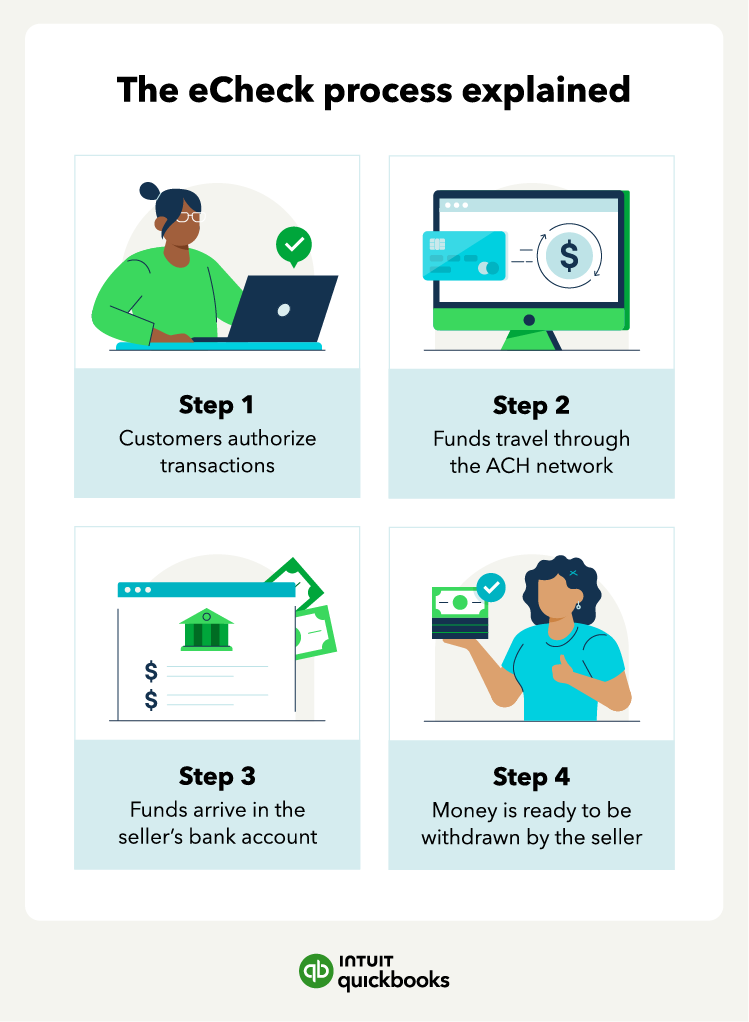Advantages of electronic checks
eCheck transactions can be useful for recurring payments and direct deposit, but several other perks may benefit your business.
Ease of use
If your business frequently processes paper checks or has recurring customer transactions, eChecks can save you time. Your customers will benefit from having easier ways to pay, and you’ll reduce the risks of human error during payment processing. eChecks also provide a digital transaction log that feeds data to your accounting system, making reconciliation simple.
Reliability
eChecks are generally a reliable way of transferring funds. They use the ACH network to process transactions. The ACH system is governed by the Federal Reserve as well as the National Automated Clearing House Association, which upholds strict regulatory guidelines for participating banks and providers.
eChecks pass through far fewer hands than paper checks, which speeds up the transaction process and mitigates fraud risk (more on that in a moment). If your business collects recurring customer payments, eChecks can be a more consistent payment method than credit cards.
Cost-effectiveness
Another big benefit eChecks offer merchants and other small businesses is their cost-effectiveness. Processing fees for eChecks are typically more affordable than other payment methods, like credit cards, which can range between 1.5% to 3.5% of each transaction. All in all, accepting eChecks can reduce payment processing costs by up to 60%.
Security
eChecks are generally considered a safe, reliable payment option for both merchants and customers. On the customer’s side, eChecks leverage data encryption to protect sensitive details like bank routing information and account numbers. In addition, eChecks exchange fewer hands than sending or cashing a check.
As for the merchant, data encryption works in your favor too. To mitigate the risk of receiving a bad check, it’s a good idea to research payment processors and ensure you’re only working with reputable providers.














